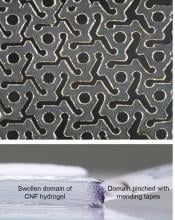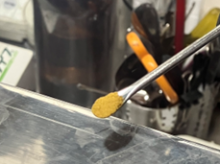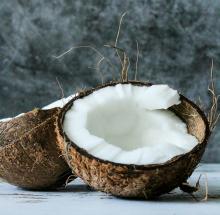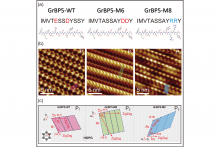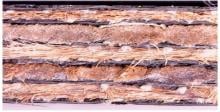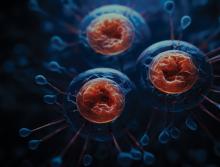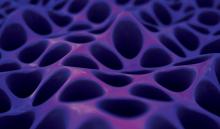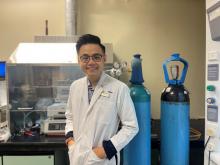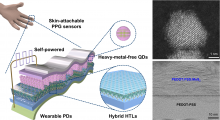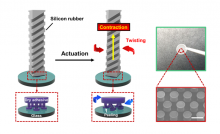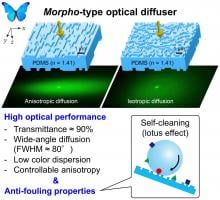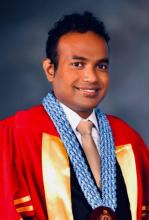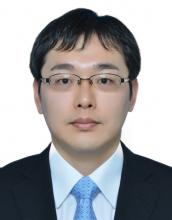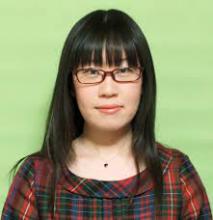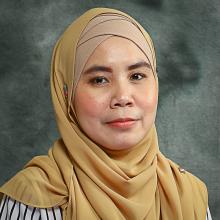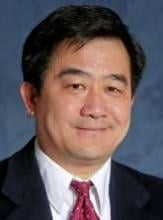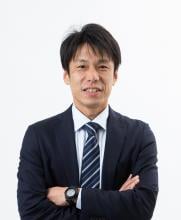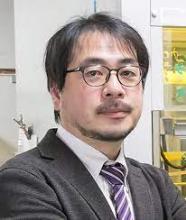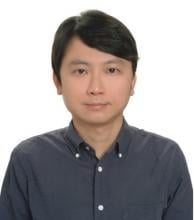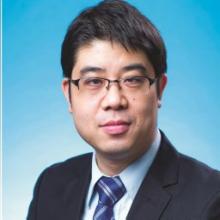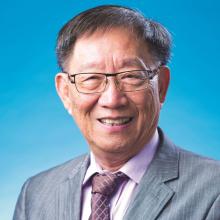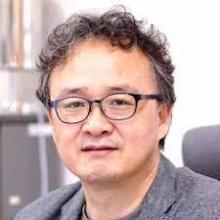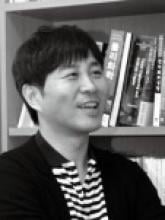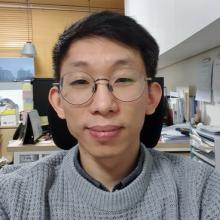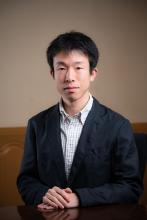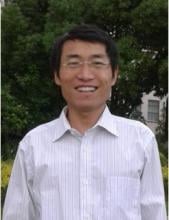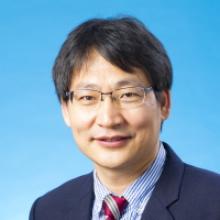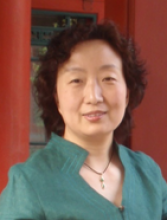Engineering & Technology Materials Science and Engineering
News
11 Apr 2024
Laser-patterned thin films that swell into kirigami-like structures offer new opportunities in hydrogel technology.
11 Apr 2024
Trapping oxygen molecules adsorbed at defect sites in 2D semiconducting crystals offers greater control over the crystals’ electronic and photonic behaviour.
10 Apr 2024
Process that can lead to mass synthesis yields solid sulfide electrolyte with world’s highest reported sodium ion conductivity and glass electrolyte
08 Mar 2024
An international multidisciplinary team of researchers from Singapore, India, Malaysia and Indonesia are breaking boundaries in 3D Printing. They have developed Coir Fiber Polymer Composites with enhanced strength, presenting a new and sustainable way for applications in food and medical packaging.
28 Feb 2024
In a study recently published in the journal SMALL, a weekly peer-reviewed scientific journal covering nanotechnology, published by Wiley-WCH, Germany, researchers from Nano Life Science Institute (WPI-NanoLSI), Kanazawa University, Japan, collaborating with Professor Sarikaya, Seattle, USA, used frequency modulated atomic force microscopy to reveal the molecular architecture of genetically designed and point mutated peptides and their self-organizations each forming single-molecule thick, distinct biological crystals on atomically flat graphite and MoS2 surfaces, offering a potential platform for hybrid technologies such as bioelectronics, biosensors, and protein arrays.
26 Feb 2024
Experimental analysis and computer simulations reveal how woven fabric composite materials are deformed by heat.
26 Feb 2024
Touch sensors that don’t even need direct contact offer new sensitivity for robotic 3D structure recognition and wireless transmission of data.
26 Feb 2024
Analysis of materials can be done quicker and with less expertise with the help of proven machine learning techniques established in biomedical fields.
26 Feb 2024
Researchers have developed a proof-of-concept system that allows robotic experiments to run without any human intervention.
26 Feb 2024
Researchers have developed an AI-driven system that can design novel molecules with any desired properties and suggest methods to create them using readily available materials.
26 Feb 2024
Researchers have combined machine learning with robotic process automation to speed up and simplify a time-consuming process.
25 Feb 2024
Fibre-reinforced composites, prone to internal damage, benefit from fibre hybridisation. Using ductile fibre glass mesh (FGM) in ramie/FGM composites, this study shows improved damage resistance, load-bearing, and deformation capacity.
23 Feb 2024
A new technique allows researchers to map how the cellular “skeleton” adapts to external stress.
15 Feb 2024
Coordination polymer crystals show promise as a new generation of light sources for industry and medicine.
15 Feb 2024
A new method allows scientists to gather enough information about the properties of metals to enable the prediction of the properties of new materials.
15 Feb 2024
Vaccines and therapies based on messenger RNA could be more readily delivered due to a non-toxic polymer that protects RNA and controls its release inside cells.
08 Feb 2024
A trained AI system learns to design cellular materials with specific target properties for a wide range of potential uses, including tissue engineering and energy storage.
08 Feb 2024
A new coating for tiny vaccine carriers allows vaccines to remain in the body for longer.
22 Jan 2024
Researchers from Thailand have pioneered the conversion of waste HDPE milk bottles into high-stiffness composites, utilizing PALF reinforcement for a 162% increase in flexural strength and 204% in modulus. This eco-friendly upcycling boosts mechanical properties while sequestering carbon, presenting a promising path for sustainable materials.
15 Jan 2024
Research by Assistant Professor Edison Ang Huixiang and his team from National Institute of Education/Nanyang Technological University Singapore
15 Dec 2023
A new study have compared the reinforcing efficiency of pineapple leaf fiber (PALF) and cultivated flax fiber in poly(butylene succinate) composites. PALF, a less explored but potentially sustainable alternative, outperformed flax at 20 wt.%, showcasing its potential in high-performance bio-composites and aligning with environmental goals.
13 Dec 2023
"Amaterasu" particle: a new cosmic mystery, Geckos inspire robotic device, Targeting cancer while protecting healthy cells, Honey, I shrunk the bear, Two species lost to science spotted again. Plus New Science Communication Resources. Read all in the latest Editor's Choice.
08 Dec 2023
- A joint research team of members from DGIST, UNIST, and Seoul National University have successfully developed an ultra-thin, high-performance photosensor based on eco-friendly quantum dots.
- They have successfully implemented a wearable pulse sensor that works stably on the skin.
- Results have been published in ACS Nano, one of the most
20 Nov 2023
A new technique allows researchers to map how the cellular ‘skeleton’ adapts to external stress.
16 Nov 2023
Analysis of materials can be done quicker and with less expertise with the help of proven machine learning techniques established in biomedical fields
10 Nov 2023
Researchers develop a technique to allow fragile objects to be transferred and released by robotics, without damage, while using a gecko inspired adhesive.
16 Oct 2023
The latest ‘large language model’ artificial intelligence system, GPT-4, could aid chemistry researchers, but limitations reveal the need for improvements.
11 Oct 2023
Researchers at Osaka University developed a nanostructured light diffuser that provides balanced lighting by diffracting blue and red light, and can be cleaned by simple rinsing with water. The diffuser consists of cheap materials and can be shaped with common tools. A protective glass coating maintains the diffuser’s optical performance yet adds durability. This work might improve the visual performance of everyday lighting displays.
05 Oct 2023
Hunting for supermassive black holes, Coastal survival at risk, Calcium and dead cell clean-up, Two naps are better than one & Pineapple leaf prosthetics. Read all in the latest Editor's Choice.
Events
18 Mar 2022
What does it take for Additive Manufacturing (AM) to move beyond? This webinar will continue explore the grand challenges of AM and its potential for growth.
09 Dec 2020 to 11 Dec 2020
The 20th International Nanotechnology Exhibition & Conference will be held in onsite-online hybrid format.
03 Nov 2020
The Singapore Centre for 3D Printing is pleased to share our first online webinar in collaboration with HP-NTU Digital Manufacturing Corporate Lab.

South Korea's Ulsan National Institute of Science and Technology (UNIST), jointly with Ulsan Metropolitan City, held the "Graphene Symposium in Ulsan" on Wednesday, May 8, 2019.
Researchers
Professor Dae-hyun Nam is dedicated to advancing electrocatalysts for sustainable energy conversion and storage. By leveraging expertise in materials science, engineering, and chemistry, he aims to address pressing energy and environmental challenges, paving the way for a sustainable future.
Taweechai Amornsakchai is an Associate Professor at Mahidol University. With a Ph.D. in Polymer Physics, his research focuses on reinforcing plastics with pineapple leaf fiber and exploring pineapple stem starch for biodegradable packaging.
Chameera Udawattha, a pioneering architect and researcher, investigates eco-friendly construction materials, exploring alternative solutions for construction and building issues. His work promotes sustainable building practices.
Dr Fabien Grasset is a Research Director at the Centre national de la recherche scientifique (CNRS) and currently serving as Director of Research for Rennes Institute of Chemical Sciences (ISCR). His areas of expertise include materials chemistry, solid-state chemistry, nanotechnology, nanoparticles, optical coatings and thin films.
Taishi Yokoi is an Associate Professor of the Institute of Biomaterials and Bioengineering at Tokyo Medical and Dental University. His research areas include biomedical engineering, inorganic compounds and inorganic materials chemistry.
Dr Naoka Nagamura is senior researcher at the National Institute for Materials Science (NIMS) and visiting associate professor at Tokyo University of Science. She researches advanced materials, electrochemistry and photoemission spectroscopy.
Ts Dr. Siti Kudnie Sahari is a senior lecturer at the Department of Electrical and Electronic Engineering, Faculty of Engineering, Universiti Malaysia Sarawak (UNIMAS). Her current research interests include thin film, advanced semiconductor materials, semiconductor processing and solar devices.
Professor Alex Jen Kwan-yue is Chair Professor of Materials Science and Director of the Hong Kong Institute for Clean Energy at the City University of Hong Kong (CityU). His expertise includes the use of molecular engineering and self-assembly for hybrid materials.
Dr. Hiroki Ago is a Distinguished Professor of the Global Innovation Center at Kyushu University. His research focuses on nanomaterials, particularly graphene and related 2D materials, and their applications.
Prof. Hiroshi Yabu is a Professor and Principal Investigator at the Advanced Institute for Materials Research (WPI-AIMR) at Tohoku University. His research interests include self-organization, biomimetics, and bio-inspired materials for energy and low environmental impacts.
Dr. Zong-Hong Lin is a Professor at the Institute of Biomedical Engineering, National Tsing Hua University and at the Department of Biomedical Engineering, National Taiwan University.
Her current research focuses on the synthesis of semiconducting polymers for organic electronics and has published >100 papers in this area of research.
Prof Yang obtained his bachelor degree from Peking University in 2001, and PhD from Princeton University in 2007. His research interest includes the development of advanced alloys, including metallic glasses, high entropy alloys, low dimensional metals/ceramics and metamaterials.
Robert E Simpson is an Associate Professor at the Singapore University of Technology and Design (SUTD). Rob’s research interests are focused on designing new materials for applications in electronics, photonics, data storage, and biosensing.
Professor Liu Chain-Tsuan is University Distinguished Professor at City University of Hong Kong, and Senior Fellow of the Hong Kong Institute for Advanced Study (HKIAS).
Ridha is a Senior Lecturer in the Department of Mechanical Engineering and is jointly an associate member of Advanced Manufacturing and Materials Processing (AMMP) Center at the University of Malaya.
Zunaida Zakaria is researcher at Faculty of Chemical Engineering Technology, Universiti Malaysia Perlis (UniMAP). She has more than 15 years of experience in Polymeric Materials, Processing, and Characterization. Her main research interest are in Polymeric Foam, Syntactic Foam, Epoxy Macroballoon, Failure Mechanism in Polymeric Foam, Microbeads/Porous, and Activated Carbon from RHA for wastewater treatment.
He is currently an assistant researcher in Jilin University. His research focuses on functional surfaces, bioinspired antifouling coatings, and medical antifouling materials.
Professor Jong- Soo Lee's research interest is in designing a new type of multifunctional nanoparticles for energy related devices.
Prof. Jooyong Kim's research interest includes the development of smart fashion products based on electronic textiles.
Dr. Chi Cuong Vu is currently a research assistant at Soongsil University, Seoul, South Korea where he focuses on developing flexible wearable sensors and their applications in human activity monitoring or personal healthcare.
Dr. Eng. Hafsa Jamshaid C Text FTI is working as Associate Professor at National Textile University. She is an experienced textile professional in the field of weaving, knitting technologies for technical fabrics and composites.
Ken-ichi Uchida is a group leader in the Spin Caloritronics Group, Research Center for Magnetic and Spintronic Materials under the National Institute for Materials Science (NIMS), Japan
Satoshi Ishii is a principal researcher at International Center for Materials Nanoarchitectonics (MANA), National Institute for Materials Science (NIMS), Japan. He also holds an adjunct associate professorship at University of Tsukuba.
I am the Director of Research and Associate Professor (Reader in Mechanics of Composite Materials) at the Newcastle University in Singapore.
Fei Zhuge is a professor at Ningbo Institute of Materials Technology and Engineering (NIMTE), Chinese Academy of Sciences (CAS).
Zuankai Wang is currently a Professor in the Department of Mechanical Engineering and Associate Dean (Internationalization & Industry Engagement) of College of Engineering at City University of Hong Kong.
Dr. KeweiGao is the Professor of Materials Physics, and the Associate Chair of the Department of Materials Physics and Chemistry at University of Science and Technology Beijing (USTB).
Roland Hany is a Group Leader at Empa, Swiss Federal Laboratories for Materials Science and Technology.
Kyohei Okubo is an assistant professor at the Faculty of Industrial Science and Technology, Department of Materials Science and Technology, Tokyo University of Science.
Giants in history
Lin Lanying (7 February 1918 – 4 March 2003) was a Chinese material engineer remembered for her contributions to the field of semiconductor and aerospace materials. Lanying was born into a family who did not believe in educating girls and she was not allowed to go to school.



